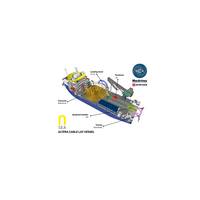
MacArtney to Equip N-Sea’s Altera CLV Newbuild
Q1 2026."By joining forces with SCA and Enersea, we’ve brought together the best of three worlds—innovative technology, smart engineering, and robust execution,” said Mike Welling, Business Development Manager at MacArtney Offshore Wind Solutions. Altera CLV is being built by Neptune Marine and will transfer to The Netherlands in Q4 2025 for fitting and commissioning in Q2 2026. The DP2 vessel will be dual fuel (methanol) prepared, equipped with a 25t offshore knuckle boom crane, mooring system and can accommodate up to 99 people
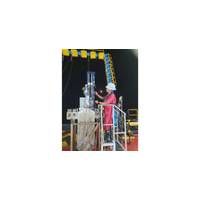
TDI-Brooks Completes Trinidad Geotechnical Project
coring project for Geohidra. This operation was conducted from the DRAGON Field to the HIBISCUS platform off the coast of Venezuela and Trinidad aboard the DONA JOSE II (DJII). Throughout this campaign, TDI-Brooks performed a total of eighteen (18) Cone Penetration Tests (CPTs) utilizing their Neptune 3,000 miniature coiled rod CPT system, achieving penetration depths between 3.25 and 6.25 meters in water depths of 130 to 150 meters. Additionally, eighteen (18) Box Core samples and eighteen Cyclic Mini T-Bar tests on Box Core samples were completed

SeeByte and Kraken Robotics sign MOU
aperture sonar (SAS) technology, which supports various maritime platforms, including uncrewed underwater vehicles of different sizes and the KATFISH towed SAS system, while SeeByte excels in creating advanced maritime software solutions, such as the SeeTrack Mission Management System (MMS), the Neptune Autonomy System, and Automated Target Recognition (ATR). Together, the two companies will provide a seamless, proven solution for maritime operations, ensuring competitiveness, availability, and a superior user experience.Chris Haworth, CEO at SeeByte, said, “This collaborative approach brings
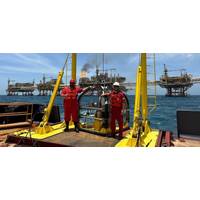
TDI-Brooks Wraps Up Geotechnical Job Offshore Mexico
in geotechnical and offshore survey projects, has completed a third-party geotechnical coring project for Geohidra in the Southern Gulf of Mexico.This operation took place aboard the MV Laguna Azule. During the campaign, TDI-Brooks conducted a total of 32 Cone Penetration Tests (CPTs) using their Neptune 3000 miniature coiled rod CPT system, achieving penetration depths of four to six meters in water depths ranging from 30 to 40 meters.The TDI-Brooks Datem Neptune 3000 Miniature Coiled Rod CPT System is designed for Cone Penetration Testing and boasts a push capability of 10kN.This lightweight system
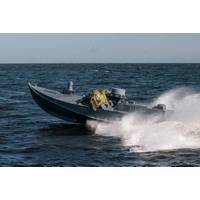
Ukraine's Drone Success Shapes US Pacific 'Hellscape' Strategy
$220,000 cost.Only six meters (20 feet) long and 60 cm (two feet) high above the water level, the craft can carry up to 850 kg of explosives up to 1,000 km (620 miles), often largely undetected thanks to its low profile and stealth material construction.Along with Ukraine's domestically produced Neptune antiship missiles, the smaller maritime "Magura" drone and foreign-made missiles such as the British "Storm Shadow", these special forces-operated, remote-controlled attack craft have sunk or damaged what Ukrainian analysts and officials say is up to a third of the Russian Black
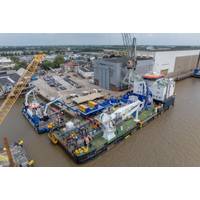
N-Sea and Neptune Marine Launch Subsea Cable Repair Vessel
N-Sea Group and its partner Neptune Marine have launched Curo, the first dedicated the first dedicated cable repair and installation vessel.The launch took place at the Neptune Ship Yard in Hardinxveld-Giessendam.Neptune Marine Service recently converted the existing anchored barge NP-459 into a dedicated cable repair DP2 vessel with 50t offshore knuckleboom crane named Curo.The vessel will be available from mid-June 2024 for cable repair and installation projects and will be sailing for its first inter-array replacement project in Germany in coming two weeks.Curo is equipped with an innovative cable

Why There May Be Oceans Inside Dwarf Planets Beyond Pluto
, even for moons that should have no tidal heating, and for bodies that aren’t moons at all, evidence for internal oceans keeps mounting up. The list of worlds that may have, or may once have had, internal oceans includes several moons of Uranus, such as Ariel, Triton, the largest moon of Neptune, and Pluto.One of the best images we have or Ariel. (Image: NASA/JPL)The closest internal ocean to the Sun may be inside the dwarf planet Ceres, though that is perhaps largely frozen by now, or may just consist of salty sludge.Particularly amazing to me is indications of ocean worlds way beyond
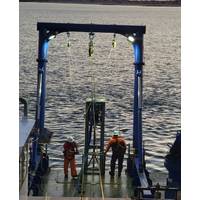
TDI-Brooks Completes Survey Off New York & New Jersey
surveys, archaeological identification surveys, light geotechnical coring, and benthic sampling.TDI-Brooks utilized three survey vessels, namely the Brooks McCall, Miss Emma McCall and Marcelle Bordelon. The geotechnical survey involved more than 150 pneumatic vibracores (pVCs) and more than 150 Neptune 5K cone penetration tests (CPTs) gathered from both lease areas and along the offshore cable route (OCR). Along with multiple export cable route surveys, a reconnaissance survey covering the entirety of the lease area with 150-meter spaced survey lines was conducted, followed by a more detailed
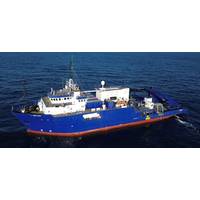
TDI-Brooks' New Vessel Ready for Work
various features and tools. It has a North American MCK-1240 upper forecastle deck on the starboard side, which includes a SWL 7.1-ton crane. Additionally, the vessel offers spacious accommodation with 46 berths and a large deck capacity.In addition, the Nautilus is equipped with Geomil Manta-200 CPT, Neptune 3K & 5K vibracorers and a specially designed pneumatic vibracorer by TDI-Brooks. These tools enable efficient and accurate geotechnical surveys and sampling.The Nautilus is equipped with a Teledyne RESON full ocean depth multibeam echosounder (MBES), which enables surveys up to approximately
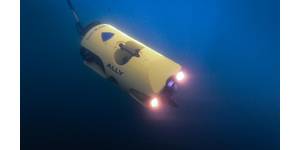
 February 2025
February 2025





